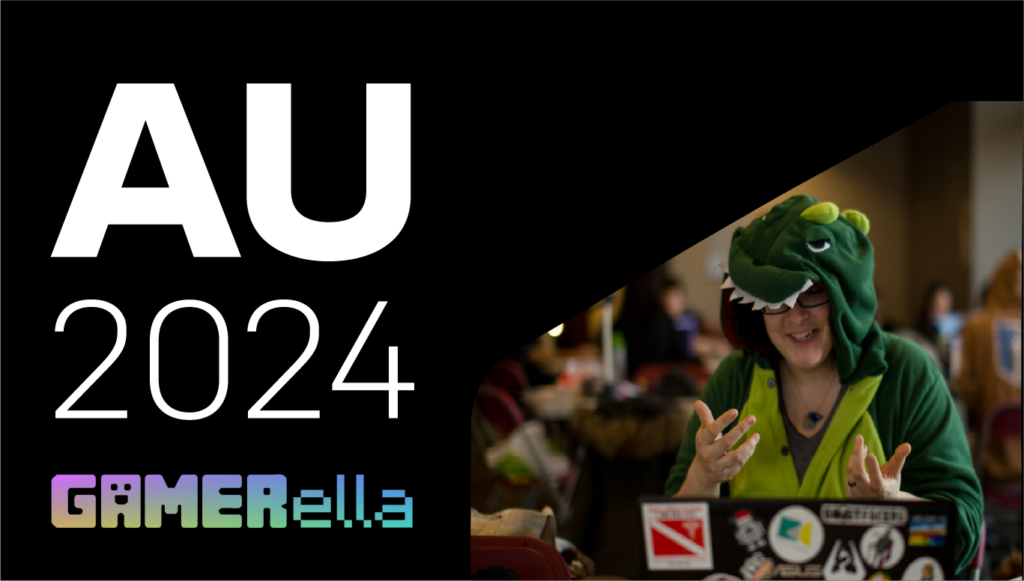
As the number of people worldwide playing video games grows exponentially, inclusivity is becoming increasingly important. At AU 2024, Gina Hara, co-founder of game initiative GAMERella and Alex Custodio, academic, author, and artist, spoke about the current state of game diversity and their development at the digital event “Breaking Barriers: A Meetup on Diversity in Games.”
Here are six key takeaways from the meetup’s discussion —including what’s currently being done and opportunities for improvement.
Aiming to develop a game that promotes inclusivity? Explore how Autodesk’s game development tools can turn your vision into reality.
1) Diversity does matter to gamers
While diversity may seem like a throwaway factor to many critics of such initiatives, gamers notice when studios move towards diversity in their settings and cast. According to the Global Gamer Study by Newzoo, which aggregated 36 international consumer markets, gamers worldwide believe that diversity matters in their games.
These numbers rise with each new generation: the studies found them to be 66% among millennials, 69% for Gen Z, and 71% for Gen Alpha. In short, as gaming’s audience becomes wider and spreads to more markets, more and more gamers want to see a variety of characters and settings, including some that look like them and the world around them.
2) Representation through authentic and celebratory mirrors and windows
The challenge comes in how this diversity is portrayed. Educators and media scholars often use mirrors and windows as metaphors to discuss the representational power of media. This concept was initially introduced by Emily Style1 and further expanded by Rudine Sims Bishop2.
- Mirrors represent how players see themselves reflected in their media, portraying true, lived experiences. For example, games can offer customizations in gender, skin tone, and size to let game players create characters that look more familiar.
- Windows, on the other hand, offer insights into the experiences of others, including characters, places, and cultural references informed by their lived truths.
Modern diversity initiatives aim to make these representations authentic and celebratory. In other words, truly diverse representation goes beyond the narratives of stereotypes, trauma, and/or struggles. Diverse characters aren’t “tokenized” by existing with little depth, nor reduced to old tropes.
3) Systemic barriers still exist for aspiring developers and leaders
As with many tech industry spaces, it can be difficult for minoritized groups to break into the games industry. Without many role models and support initiatives, such groups may not even consider pursuing a career in game development.
Beyond training and hiring, a glass ceiling exists for many developers, as diverse leadership in the games industry is lacking. Therefore, decisions to usher in more diverse stories and developers can be less of a priority. At the moment, there aren’t many established systems for mid-career developers to rise in their careers into such leadership positions.
4) Investing in inclusive environments fosters diverse games
Many industry leaders see this gap in representation and have started initiatives to try to bridge it, with programs and accommodations catered to aspiring developers’ needs.
GAMERella, for example, is a “game jam”—like a hackathon for game developers—that has catered to marginalized communities since 2013. It is the longest-running game jam of its type. When its participants aren’t creating games, they can expand their skills through various workshops.
With GAMERella, there are also opportunities for conflict resolution, counseling, prayer rooms, and dedicated mentors to help “jammers” grow their skills, work through challenges, make connections, and encounter role models.
Within the games industry, developers can tap into consultants for cultures and disabilities, who can guide teams in creating authentic representation. While consultants can certainly help, the panel’s speakers highlighted that there’s no substitute for having a diverse development team.
5) User-generated content shows what players want
Games have come a long way in both accessibility and diversity. Still, there’s always room for improvement. While “modding” and other activities are often perceived as an activity for “hardcore” game players, many games have communities with massive, widely diverse player bases tapping into the power of mods to go a step further.
For example, while The Sims already has a lot of options for diversity, players have also gone out of their way to include more. Modders will include custom scars for procedures such as heart surgery, C-sections or mastectomies, as well as additions such as wheelchairs, oxygen tubes, blind eyes, and more.
Other games such as Harvest Moon or Skyrim allow players to change who they can romance with in-game romance systems, so that queer players aren’t solely locked into heteroromantic dynamics.
6) Games have come a long way—and still have a long way to go
With video games reaching such a massive audience, the industry’s growing trend to not only be diverse, but to be more respectful about diverse identities, has paid off.
Panelists distinctly remembered older video games tapping into negative stereotypes. One example was a character named Vivian in 2004’s Paper Mario: The Thousand-Year Door. Vivian was implied to be a transgender woman, but the game mocked the identity in the Japanese version and removed it entirely in the English localization. Twenty years later, in the Switch remake, both versions revised the script around Vivian to correct her gender.
Queer representation is getting stronger: AAA games Baldur’s Gate 3 and Dragon Age: Inquisition both have explicitly transgender characters. The change is coming slowly but surely, especially as more diverse and unique developers advocate for positive change.
To learn more about diversity in games and beyond, visit GAMERella and PTP Pink Paper.
1 Style, Emily. “Curriculum as Window and Mirror.” In Listening for All Voices. Summit, NJ: Oak Knoll School Monograph, 1988.
2 Bishop, Rudine Sims. “Mirrors, Windows, and Sliding Glass Doors.” Perspectives: Choosing and Using Books for the Classroom 6, no. (1990): ix–xi.
Got an idea for a game that highlights diversity? Discover how Autodesk game development solutions can help you bring it to life.